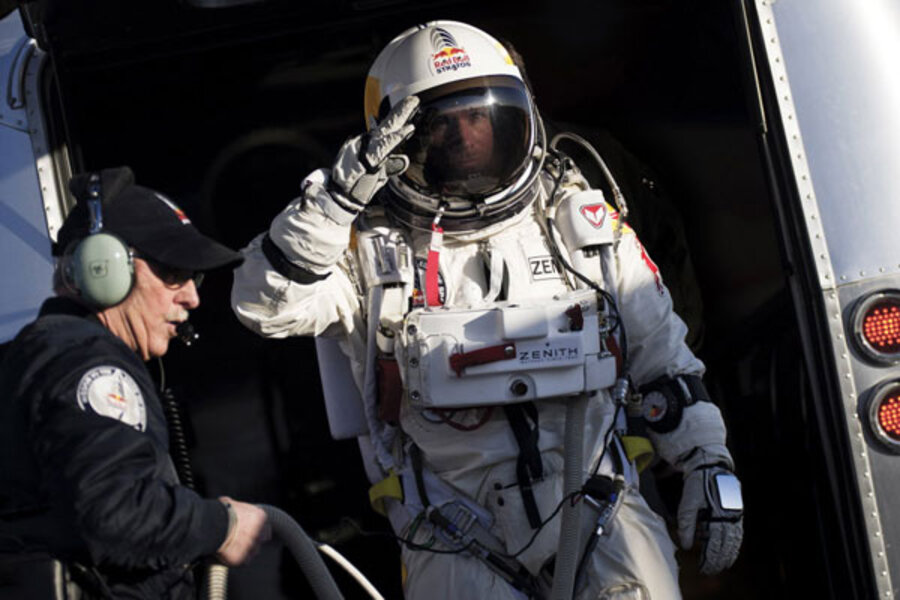Skydiver jumps 13.6 miles on path to world's highest jump
Loading...
Skydiving daredevil Felix Baumgartner is more than halfway toward his goal of setting a world record for the highest jump.
Baumgartner lifted off Thursday for a test jump from Roswell, N.M., aboard a 100-foot helium balloon. He rode inside a pressurized capsule to 71,581 feet — 13.6 miles — and then jumped. He parachuted to a safe landing, according to project spokeswoman Trish Medalen.
He's aiming for nearly 23 miles this summer. The record is 19.5 miles.
"The view is amazing, way better than I thought," Baumgartner said after the practice jump, in remarks provided by his representatives.
Thursday's rehearsal was a test of his capsule, full-pressure suit, parachutes and other systems. A mini Mission Control — fashioned after NASA's — monitored his flight.
Baumgartner reached speeds of up to 364.4 mph Thursday and was in free fall for three minutes and 43 seconds, before pulling his parachute cords, Medalen said. The entire jump lasted eight minutes and eight seconds. She stressed that the numbers are still unofficial.
With Thursday's successful test, Baumgartner is believed to be only the third person ever to jump from such a high altitude and free fall to a safe landing, and the first in a half-century.
"I'm now a member of a pretty small club," he said.
When the 42-year-old Austrian known as "Fearless Felix" leaps from 120,000 feet in a few months, he expects to break the sound barrier as he falls through the stratosphere at supersonic speed. There's virtually no atmosphere that far up, making it extremely hostile to humans, thus the need for a pressure suit and oxygen supply.
The record for the highest free fall is held by Joe Kittinger, a retired Air Force officer from Florida. He jumped from 102,800 feet — 19.5 miles — in 1960.
Baumgartner is out to beat that record. He plans one more dry run — jumping from 90,000 feet — before attempting the full 120,000 feet. The launch window opens in July and extends until the beginning of October.
For comparison, commercial jets generally cruise at over 30,000 feet.
Baumgartner has jumped 2,500 times from planes and helicopters, as well as some of the highest landmarks and skyscrapers on the planet — the Christ the Redeemer statue overlooking Rio de Janeiro, the Millau Viaduct in southern France, the 101-story Taipei 101 in Taiwan.
He's also plunged deep into the Earth, leaping face-first into a pitch-dark cave in Croatia.
Baumgartner considers that 620-foot-deep cave jump his most dangerous feat so far, soon to be outdone by his stratospheric plunge. His mission takes its name, Red Bull Stratos, from the stratosphere as well as the energy drink-maker sponsor.
"I like to challenge myself," Baumgartner told The Associated Press in a recent interview, "and this is the ultimate skydive. I think there's nothing bigger than that."
He's caught NASA's attention, even though space officially begins much higher at an even 100 kilometers, 328,084 feet or 62 miles.
Kittinger is now 83 and one of Baumgartner's chief advisers. A former NASA flight director directs the medical team: Dr. Jonathan Clark, whose astronaut wife, Laurel, was killed aboard space shuttle Columbia in 2003. The accident led Clark to become an expert in spacecraft emergency escape.
Kittinger and Clark were among those taking part in Thursday's dress rehearsal.







